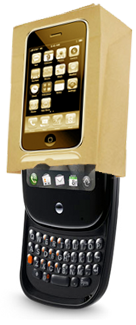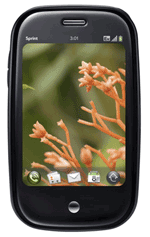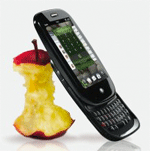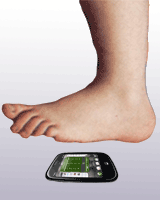Twitter talks about document leak.
IDC: Apple’s sales rank slips.
Twitter talks about document leak.
IDC: Apple’s sales rank slips.
 File this one under Utterly Unsurprising News Stories: Apple’s new version of iTunes blocks the technique that the Palm Pre was using to provide seamless of music and video with the Apple application. That was, of course, by far the likeliest scenario all along. Pre owners can sidestep Apple’s move by keeping with the old version of iTunes for the moment, but long-term, the Pre’s iTunes syncing–which was accomplished by tricking iTunes into thinking the Pre was an iPod–is dead.
File this one under Utterly Unsurprising News Stories: Apple’s new version of iTunes blocks the technique that the Palm Pre was using to provide seamless of music and video with the Apple application. That was, of course, by far the likeliest scenario all along. Pre owners can sidestep Apple’s move by keeping with the old version of iTunes for the moment, but long-term, the Pre’s iTunes syncing–which was accomplished by tricking iTunes into thinking the Pre was an iPod–is dead.
I know it would be better for consumers if Apple opened up iTunes enough to let the Pre and other non-Apple devices sync with the application. (It might even be better for Apple, since it would help it sell music to folks who don’t own its music players and phones.) But given that iTunes isn’t designed to sync with other companies’ devices, I can’t be bitterly angry at Apple for cutting off Pre owners. Or at least this ranks pretty low on my list of things to be irked at Apple about.
I remain a little mystified by Palm’s actions to date, since the company used iTunes syncing as a selling point, even though it’s run by smart people who knew that Apple probably wouldn’t stand for it. There’s a a pretty obvious step it can take now, if it so chooses: release a piece of software for Windows and Macs that handles the iTunes syncing that it’s been doing directly. It can license the technology if it needs to. It may not be morally obligated to do something like this–at the moment, the Palm site still touts iTunes sync and uses fine print (in light gray type) to say it may not work forever:
![]()
…but I still think it would be classy on Palm’s part. Maybe it’s been planning to do something like that all along.
With the Pre an apparent success here in the US, and Palm planning to take on the Canadian market later this year, its next target is Europe. The company announced Tuesday that it had selected O2 to bring the phone to the UK, Ireland, and Germany, and Spain on the Movistar network.
The company calls Europe an important region for Palm. “Since we showed Palm Pre at Mobile World Congress in February, there’s been a great deal of anticipation for an announcement about European availability, and that day is here,” chairman and CEO Jon Rubenstein said.
Since its in Europe, it’s obviously GSM… thinking that we may see the Pre on AT&T or T-Mobile soon too? A point to ponder…
 Both Sprint and Palm have a lot riding on the Palm Pre. In Sprint’s case, the carrier desperately needs a hit to help it stop bleeding customers. For Palm, its much more serious: either the Pre is a success, or the company itself may fail.
Both Sprint and Palm have a lot riding on the Palm Pre. In Sprint’s case, the carrier desperately needs a hit to help it stop bleeding customers. For Palm, its much more serious: either the Pre is a success, or the company itself may fail.
According to Charter Equity Research analyst Edward Snyder, neither company has anything to worry about. While early estimates pegged initial Pre sales at 150,000 units, Snyder believes that the actual number is about twice that.
He says that his own checks show that demand for Palm’s touch screen device remains strong, and Palm is churning out about 15,000 Pres per day. At that rate, Sprint should have about 1 million of the devices to sell in the upcoming summer quarter. Neither Palm nor Sprint have so far commented on the report.
Internet forums are atwitter about Palm Pre build quality issues. The revelation that the Palm Pre might be shoddy could not come at a worse time for the company, as it struggles to find sure financial footing.
A comment left at Palm enthusiast Web site Precentral.net sums up many of the quality problem that early adopters claim to be experiencing:
“Im [sic] on my THIRD pre (yellow box). Over the last two weeks, i’ve noticed an increasing amount of play with the screen. I’ve also noticed that on the left side of the device the two sections are separated enough that i can almost see the innards. When I push them together, you can hear squeaking. On top of that, the device came with a loose power button that doesn’t click nearly as firmly as that of other devices.”
Last week, RBC Capital analyst Mike Abramsky estimated that Palm has sold 150,000 Pre units so far. That is not as widely successful as the iPhone 3GS, but it’s a promising start. However, the Pre’s promise might fall short if it gains a reputation for being unreliable.
The iPhone is stiff competition, but Palm faces an additional challenge from RIM’s Blackberry Tour and new Android phones. Palm’s acclaimed WebOS operating system cannot keep pace on unreliable hardware. Meanwhile, Palm’s stock has become a new favorite of short sellers due to its dismal earnings report last week and lack of guidance about future Pre sales. Palm’s Pre could be its last best hope, but the company still has a huge challenge in front of it.
 PreThinking has noticed that Sprint is running ads for the Palm Pre directed at the earliest of iPhone adopters–the folks who bought first-generation iPhones two years ago, and whose contracts are therefore starting to end. (Or will be in a few days–next Monday is the second anniversary of the iPhone’s introduction.) The ads correctly point out the Pre’s multitasking and Sprint’s all-inclusive $99 service plan as reasons to consider a Pre. They also mention Sprint’s 4G network, which is a tad odd given that the Pre doesn’t support it.
PreThinking has noticed that Sprint is running ads for the Palm Pre directed at the earliest of iPhone adopters–the folks who bought first-generation iPhones two years ago, and whose contracts are therefore starting to end. (Or will be in a few days–next Monday is the second anniversary of the iPhone’s introduction.) The ads correctly point out the Pre’s multitasking and Sprint’s all-inclusive $99 service plan as reasons to consider a Pre. They also mention Sprint’s 4G network, which is a tad odd given that the Pre doesn’t support it.
The ads inevitably bring to mind Palm investor Roger McNamee’s amazing prediction that “not one” original iPhone user would still be using an iPhone within a month of the AT&T contract coming to an end. Sprint will presumably be quite happy if even a smallish percentage of first-gen iPhone owners switch. But would doing so be a rational move?
Sure, for some folks. I’d at least consider the possibility myself if I had an old iPhone and my obligation to AT&T was nearing its end.
 Sometimes threats are angry, blustery, and public. Sometimes they come in the form of…mundane product support notes. Let’s call this one Warning Shot HT3642.
Sometimes threats are angry, blustery, and public. Sometimes they come in the form of…mundane product support notes. Let’s call this one Warning Shot HT3642.
Last month, Palm announced that its Pre phone would sync directly with Apple’s iTunes software on PCs and Macs. It does, rather well, by pretending to be an iPod. It seemed unlikely that Apple would be thrilled with that scenario.
Now Apple has published a support note concerning iTunes that says that it’s aware that some “unsupported third-party media players” (read: the Palm Pre) “claim” to sync with iTunes, but that Apple can’t support or test such compatibility. And “because software changes over time, newer versions of Apple’s iTunes software may no longer provide syncing functionality with non-Apple digital media players.”
It’s conceivable that it’s just sayin’ that you never know what might happen, but virtually everybody is going to assume that the message here is that an iTunes update (possibly the next one) will kill Palm’s Media Sync feature real soon now.
I still feel like we don’t know what’s going on here. If someone sticks his head into a lion’s mouth, he’s either really, really smart or really, really dumb. Offering iTunes syncing through a clever hack is the equivalent of sticking your head into a lion’s mouth. But I don’t think anyone involved with the decision at Palm is dumb.
The thing is, Palm could implement perfectly satisfactory–if slightly less seamless–iTunes syncing by supplying its own utility that talks to an iTunes library and the music and video files on the hard drive. I wonder if it’s already done so, just in case? And if there are already lawyers somewhere drawing up suits claiming that people bought Pres because Palm told them that they’d sync beautifully with iTunes?
 Friday? Already? That was fast…
Friday? Already? That was fast…
Twitter verified accounts: really verified?
Goodbye analog TV, old firend.
Pre gets Missing Sync utility.
And Evernote’s cool note taker.
Verizon Pre in January. Maybe.
 So much about Apple’s new iPhone was revealed through rumor ahead of time that I prepared a provisional grid comparing it to the Palm Pre a couple of weeks ago. Now that everything’s official, I dug out that grid for an updating and to make any necessary corrections–and found that about 98 percent of the specs I filled in for the iPhone to Be Named Later turned out to accurately describe the iPhone 3G S.
So much about Apple’s new iPhone was revealed through rumor ahead of time that I prepared a provisional grid comparing it to the Palm Pre a couple of weeks ago. Now that everything’s official, I dug out that grid for an updating and to make any necessary corrections–and found that about 98 percent of the specs I filled in for the iPhone to Be Named Later turned out to accurately describe the iPhone 3G S.
After the jump. lots and lots of specs for the summer’s two most notable smartphones. As usual, I’m not claiming that you can use this list to determine which phone is better (especially since the 3G S remains an unreleased product as I write this). But it’s still fun to see how they compare.
 Special pre-Apple WWDC edition:
Special pre-Apple WWDC edition:
China mandates Web-censoring software.
Are there Pre screen problems?
Panasonic’s new featherweight HD camcorders.
